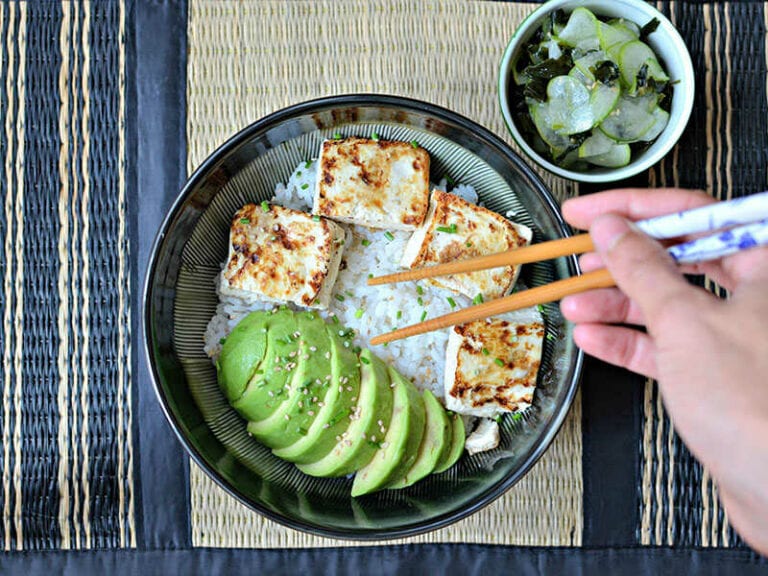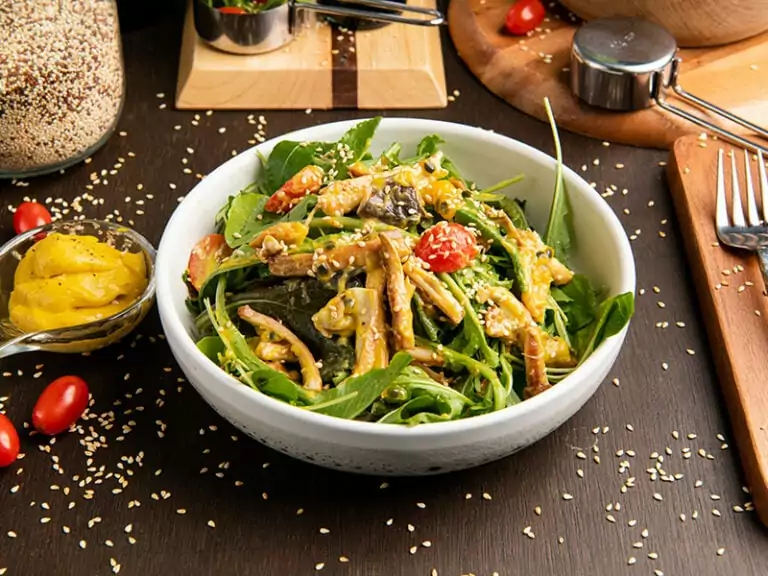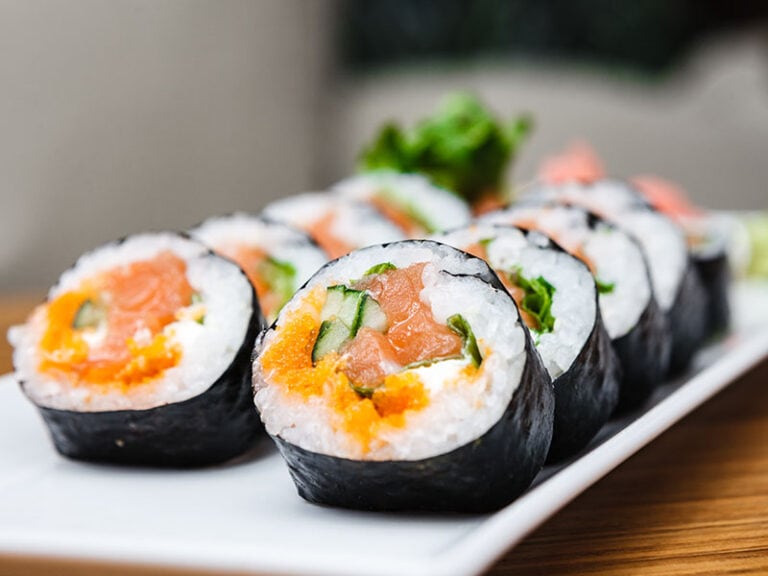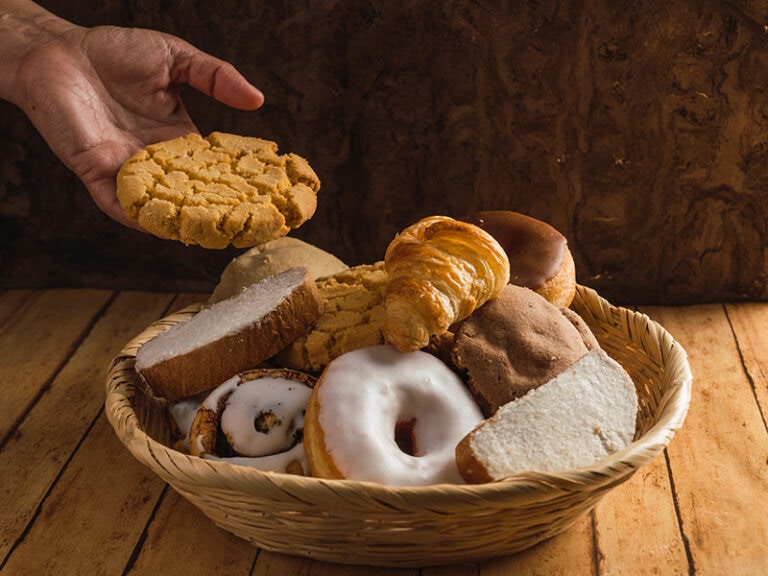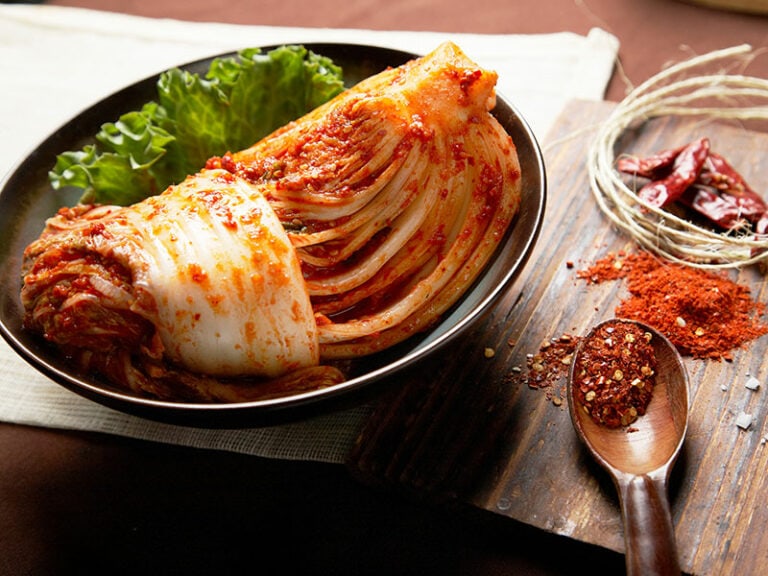How many different types of Vietnamese Pho can you tell? Will you believe me when I tell you that what you know is only the tip of the iceberg? Besides the classic varieties like beef Pho and chicken Pho, many other Pho dishes are only available in Vietnam.
Pho is the crown jewel of the flavorful Vietnamese cuisine, and learning more about it will help you appreciate this delicacy more. That’s why this post also includes interesting facts about the history of Pho and the differences between the Northern and Southern styles.
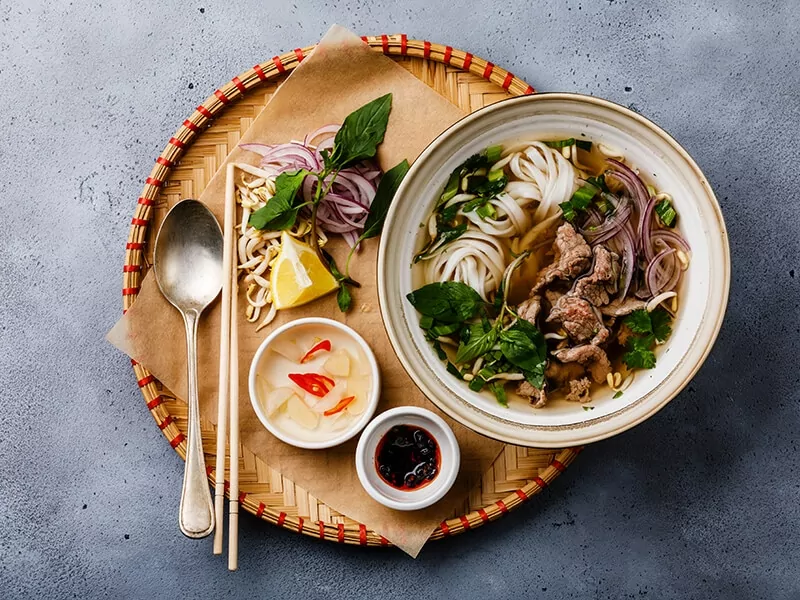
Origin Of Pho: Vietnamese Soul Shaped By French Influence
The definition of Pho (“Phở” in Vietnamese, pronounced as “Fuh”) is simple: a famous Vietnamese soup dish that is made of thick rice noodles and meat, bathed in the fragrant broth, and served with herbs. However, its origin story is anything but.
Pho probably appeared in the 1900 -1907 period: it wasn’t mentioned anywhere before that time, while many documents after that mark mention Pho as a popular dish and snack.
If you look up on the Internet, you will very likely come across two popular origin theories that portray Pho as a borrowed idea. One says that Pho drew inspiration from the French stew pot-au-feu, and that “Pho” is a corruption of “feu”.
The other assumption attributes the birth of Pho to a Chinese noodle dish (Cantonese, to be exact) called “ngưu nhục phấn” in Vietnamese or 牛肉粉 in Mandarin. However, both dishes differ significantly from Pho, making their connection very unlikely.
In fact, many Vietnamese sources, including prestigious newspapers and food critics, surmise that Pho originated from “xáo trâu”, an old-fashioned term for any Vietnamese noodle dish with broth. But the iconic Vietnamese dish wouldn’t have existed but for the French.
In the early 20th century, the French popularized the use of beef in cooking. That kind of meat wasn’t popular in local cuisine before that. Vietnamese chefs and street vendors soon mixed it, as well as broth simmered from beef bones, with the age-old recipe. And voila, Pho was born!
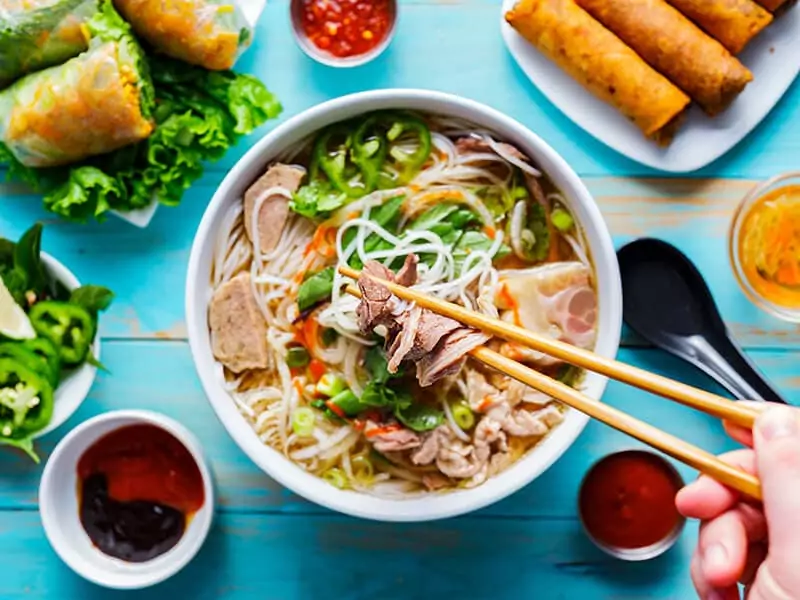
Pho Through The Ages
In the beginning, beef Pho was the only variety available, then chicken Pho came about. This noodle dish was an exclusively Northern Vietnamese specialty for the first few decades. Nam Dinh, a coastal province in the North, is widely considered the birthplace of the dish.
During the partition of Vietnam during the 1954 – 1956 period, one million or so Northern Vietnamese immigrants and refugees moved to the South. They brought Pho with them and turned it into a common dish in their new home.
When numerous Vietnamese people left the country after the Vietnam War, this noodle dish was once again the most valuable culinary asset for the refugees. This time, it spread to many Western countries and established a solid foothold.
Besides the traditional version as a broth-based noodle dish, Pho is also available in other forms. In fact, any dish made with thick Pho noodles can be called Phở in Vietnam; it doesn’t have to be a noodle soup. Therefore, don’t be surprised by things like stir-fried Pho or Pho rolls.
Many international chefs have taken a creative take on Pho, to varying results. Some examples are Pho burgers, Pho pizzas, and Phorito (Pho burritos). While they may intrigue non-Vietnamese eaters, many people in Vietnam find them quite off-putting.
Some other innovations enjoy a better reception. A good instance is instant Pho, a tasty, quick meal that a lot of busy Vietnamese people enjoy. Pho noodles made from brown rice, rather than white rice, are also a nice change.
In 2012, a famous Hanoi bartender named Pham Tien Tiep created Pho cocktail, a wonderful drink of gin, Cointreau, and traditional Pho spices. The alcoholic mixture is set on flames to roast the spices, mimicking how to cook Pho. The drink has been extremely popular to this date.
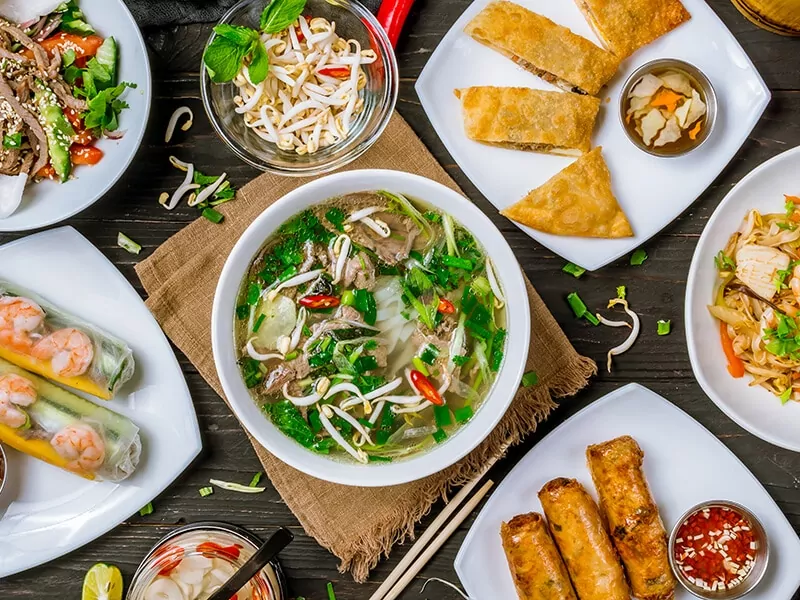
Differences Between Northern And Southern Pho
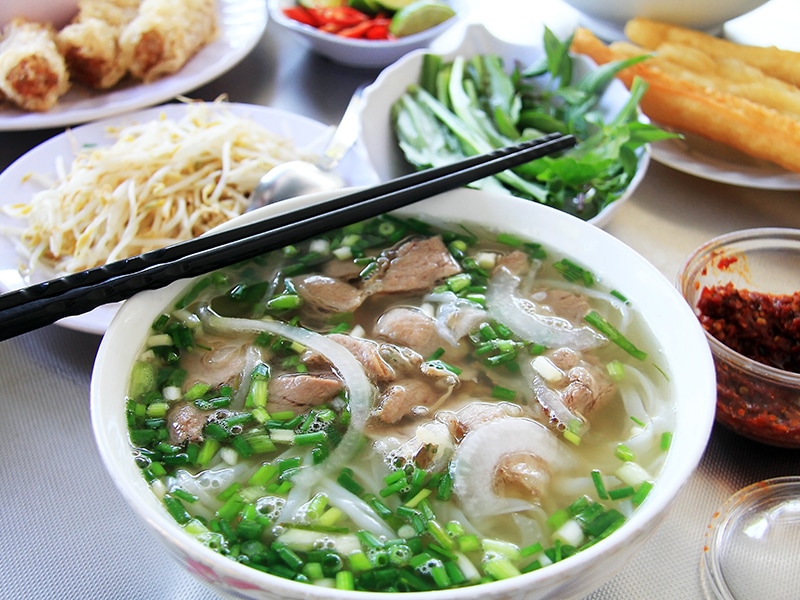
Pho began as a Northern delicacy before moving southward and undergoing significant changes to adapt to the local palate. Outside of Vietnam, the Southern version tends to be more popular. Below is a comprehensive comparison between the two.
The Broth
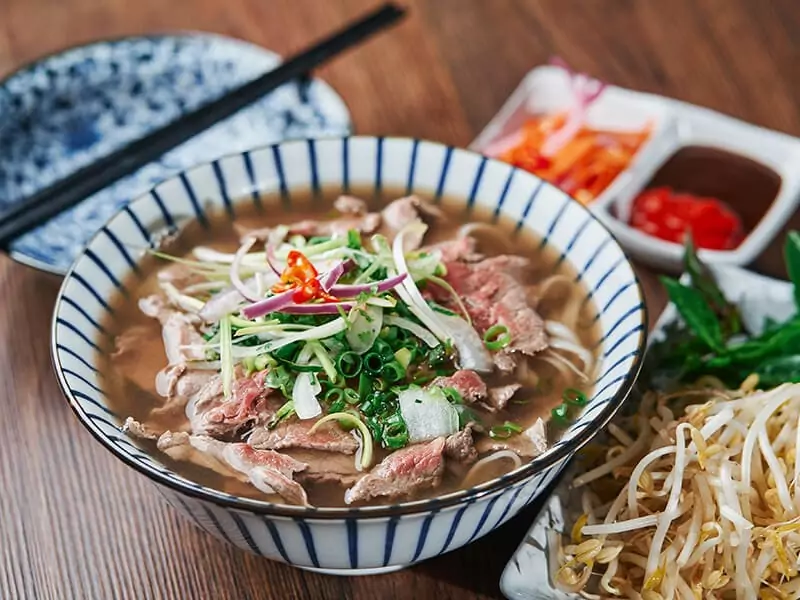
The regional differences in Vietnamese cuisine can be summed up like this: Northern food is usually salty, while Southern food is sweet. That principle applies to Pho broth as well. You will find Saigon Pho much sweeter than what is served in Hanoi.
Another significant disparity lies in how to cook the broth. Preparing classic Northern Pho broth is time-consuming because you have to simmer beef bones in water for hours, during which you have to skim off the foam constantly. The richness of the broth comes purely from the bones.
By contrast, few Southern cooks can be that patient, so they cook the broth for a shorter time. To make up for the flavors, they add other types of proteins, such as dried shredded squids or sá sùng (dried peanut worms).
As a result, the Pho broth for the Northern version is very clear and mellow in taste, while its Southern counterpart is more opaque and full of bold flavors.
Herbs And Vegetables To Serve With Pho
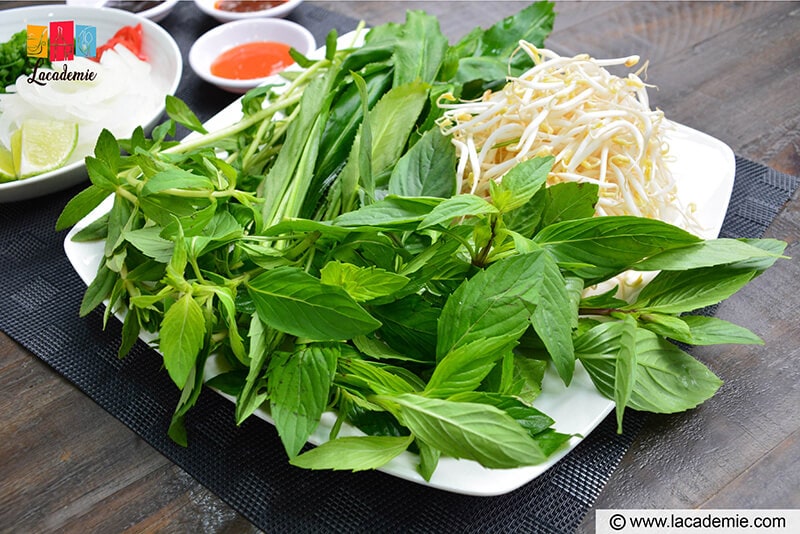
When it comes to herb garnishes for Pho, the differences between the North and South can’t get more obvious.
Southern Pho is very generous in this aspect: you can enjoy a wide selection of fresh herbs and veggies to make your Pho more cooling. Common options are bean sprouts, scallions, Thai basil, and cilantro.
Meanwhile, it is scandalous to dilute a flavorful bowl of Northern Pho with too many veggies. You should enjoy the well-simmered richness of the broth and not be distracted by greens. Understandably, locals only add some scallions and a few drops of lime juice to their Pho.
Pho Noodles And Condiments
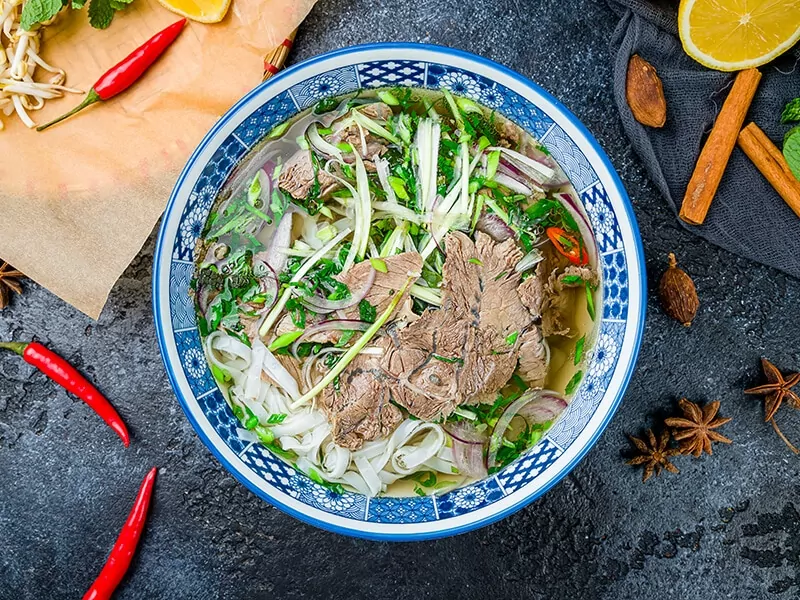
While flat and wide strands of rice noodles are a hallmark of Northern Pho, the Southern version favors rice noodles of much smaller width.
In terms of condiments, both versions have one thing in common: they require Vietnamese dipping sauce (nước mắm) enriched with lime juice and chili pepper, plus some chili sauce.
But here comes another difference: Northern eaters enjoy their Pho with fermented garlic, whereas their Southern brethren add sweet hoisin sauce.
The two versions have one last addition to distinguish themselves: side dishes. It is Giò cháo quẩy (Chinese fried dough) for the North and Nước béo (the fatty broth coming from simmering the bones) for the South. But seriously, enjoying Northern Pho with fatty broth is excellent, too.
Let’s have a bowl of Saigon Pho and see how different it is from the Northern version.
18 Tasty Types Of Pho To Discover
Beef, chicken, and vegan Pho are probably the three most popular versions. However, they are just a small part of the larger picture. Read on, and you will discover more than a dozen types of Pho to try.
Noodle Soup Dishes
This category of Pho comes with aromatic broth. While it may or may not consist of animal-derived ingredients, the inclusion of various spices and herbs is a must.
1. Beef Pho (Phở Bò)
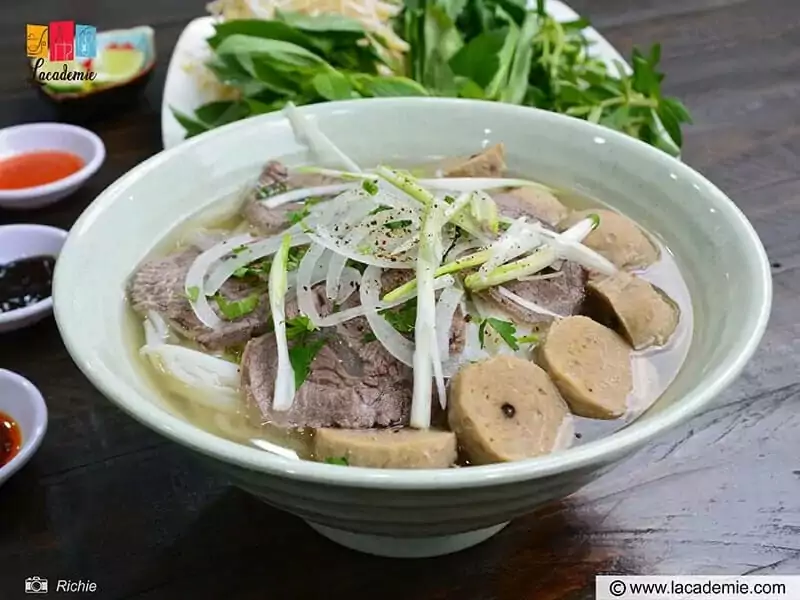
The firstborn of the large Pho family, beef Pho is probably the most popular version both in and outside Vietnam. It features various cuts of beef, though nạm bò (beef brisket with more tendons than fat) and nạm gầu (beef brisket with more fat), are the most popular ones.
If you want to try something more exciting, there are many other cuts to choose from: tendons, short ribs, ox tails, beef shanks, or beef tripe (sách bò). The last three are well-known for their succulent and collagen-rich goodness.
Pho with beef meatballs is another great choice to consider. While many Vietnamese people only add flavorful meatballs to a complete bowl of beef Pho, you can totally make them the only source of protein for your noodle soup.
The doneness of the meat is also responsible for the diversity of beef Pho. You can ask your beef to be tái (medium-rare) or tái chín (a mixture of medium-rare and well-done meat). The latter is a more popular mode of serving.
The meat for Pho is often boiled or cooked in the broth. However, if you go for medium-rare beef, you can turn it into patties or saute it lightly before adding it to the soup, creating tái băm and tái lăn versions, respectively.
Pho with beef brisket is a delicious street food item in Ho Chi Minh City.
2.Chicken Pho (Phở Gà)
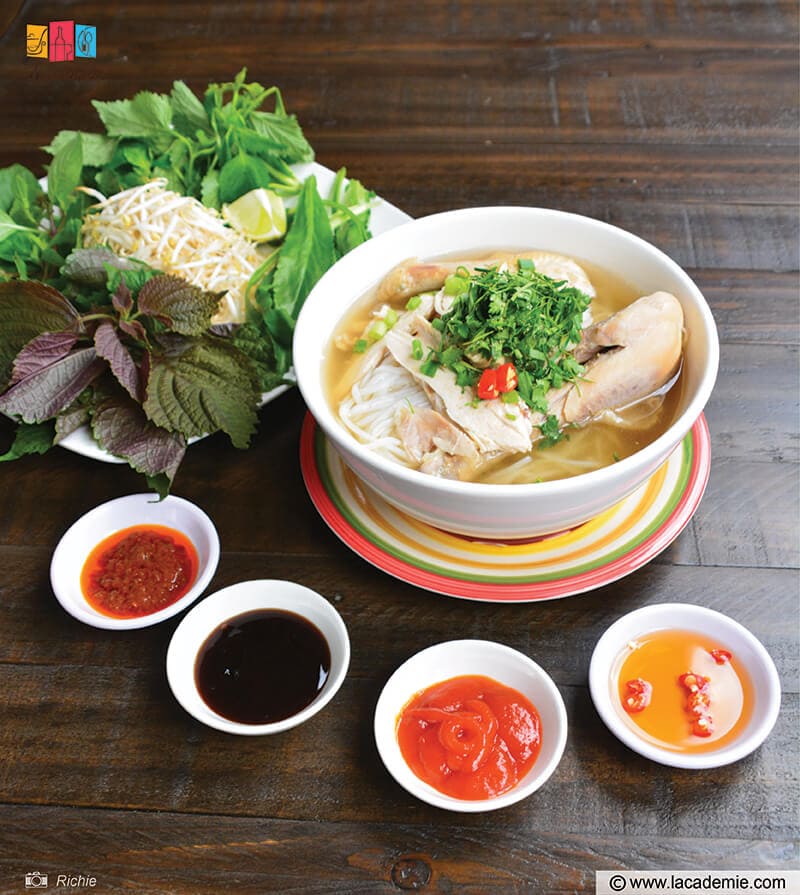
Chicken Pho began as a desperate substitution for beef Pho. In the 1930s, beef was unavailable on certain days of the week in Hanoi, which consequently caused the absence of beef Pho. So Pho addicts had to come up with something to sate their cravings.
Their solution was lean and stringy chicken. While it is less rich and flavorful than beef, its firmness is a revelation. Besides, when mixed with aromatic Pho spices, the bland taste of chicken will be upgraded to an unforgettable meal.
Making chicken Pho at home is a great idea to enjoy homemade Pho without expending too much effort. It takes less time to prepare, and you can easily cook it with leftover chicken.
The two most well-liked versions of chicken Pho are chicken thighs and chicken breasts. However, adventurous eaters can order one with chicken innards (lòng gà) or umami-packed young chicken eggs (trứng non). Many Vietnamese people love chicken Pho just because of the eggs!
The meat for chicken Pho is usually composed of thin slices of chicken with the skin on. Feel free to ask for skinless chicken Pho, though the amount of calories removed isn’t really large.
3. Pork Pho (Phở Heo)
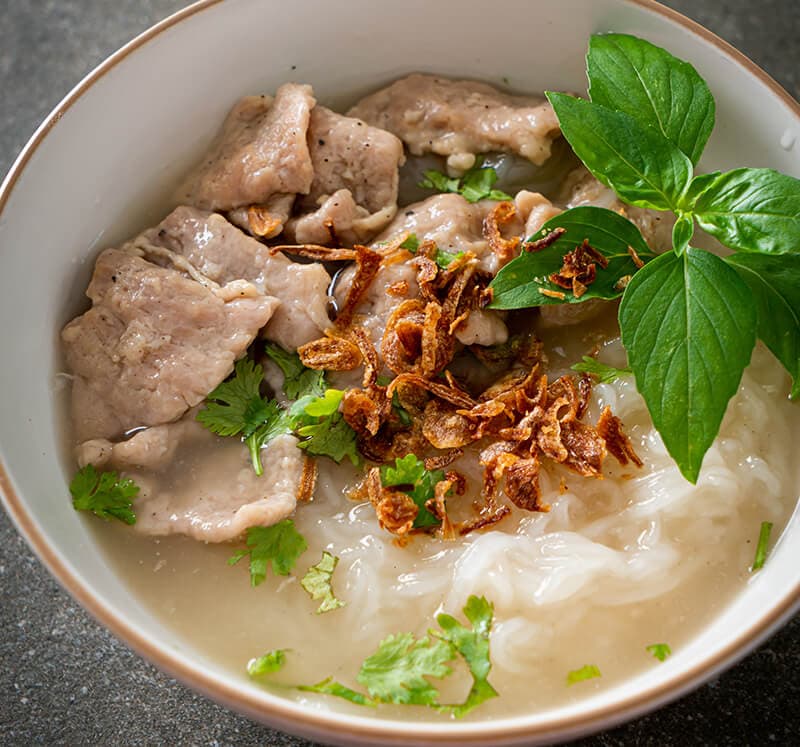
This version of Pho is more prevalent in Southern Vietnam. It bears a few similarities to Hủ tiếu, a renowned noodle soup from this region. The most apparent factor telling the two apart is that pork Pho employs more fragrant spices and a longer cooking time.
Locals prepare pork Pho the same way they do with the classic version. They just replace beef bones and meat with their pork-based counterparts. That change results in a milder-tasting yet slightly thicker broth than beef Pho.
Interestingly, though this is a non-traditional version, pork broth may make this take on Pho even more Vietnamese. After all, beef broth is more closely associated with Western cuisine, while pork is an essential ingredient in many Asian dishes.
4. Stone Pot Pho (Phở Thố Đá)
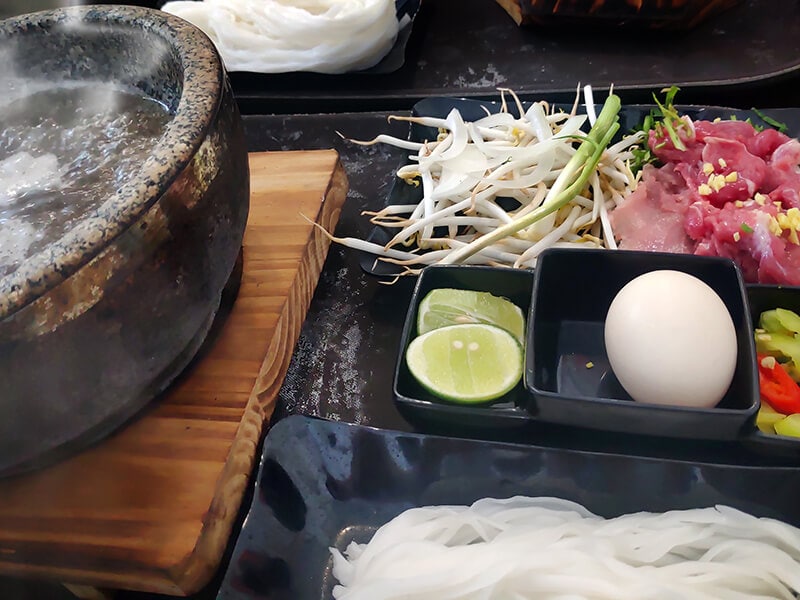
Pho is at its most delicious when it’s piping hot, but the noodle soup may go cold when it reaches you due to many reasons. The solution? Cooking Pho as you’re eating it! You can enjoy this method of serving with stone pot Pho, which is available in many high-end Pho restaurants.
The staff members will give you a large stone bowl filled with boiling broth, with noodles, raw meat, herb garnishes, and dipping condiments on the side. All you have to do is to cook the meat in the broth to your preferred level of doneness, then add the noodles and herbs.
By the time the meat becomes well-done enough for you to eat, the broth has cooled down to a comforting warmth. But be careful not to touch the stone bowl: it is extremely effective in trapping the heat and can still remain very hot.
Explore the magic of stone pot Pho in this insightful guide.
5. Pho With Red Wine-Braised Beef (Phở Bò Sốt Vang)
This fusion of Western and Vietnamese cuisine possibly first appeared in the 1930s – 1940s, when French influence was strong and Pho was fast gaining popularity. Hanoi is the best guess for its birthplace because, to this date, this version of Pho is mainly popular in the North.
To better understand what it tastes like, think of beef bourguignon made with red wine and Vietnamese herbal spices. The marinated beef is braised in beef broth for hours until tender and succulent, but there must be enough broth left to serve with Pho noodles as a noodle soup.
Phở bò kho (Pho with braised beef) is its Southern counterpart. The two have many things in common, but the Southern version doesn’t need red wine or beef broth. Its spice profile is also lighter than Pho with red wine-braised beef.
In addition, the two versions come with their region-appropriate side dishes: fried dough for the North and Vietnamese-style baguette for the South.
6. Dried Pho (Phở Khô)
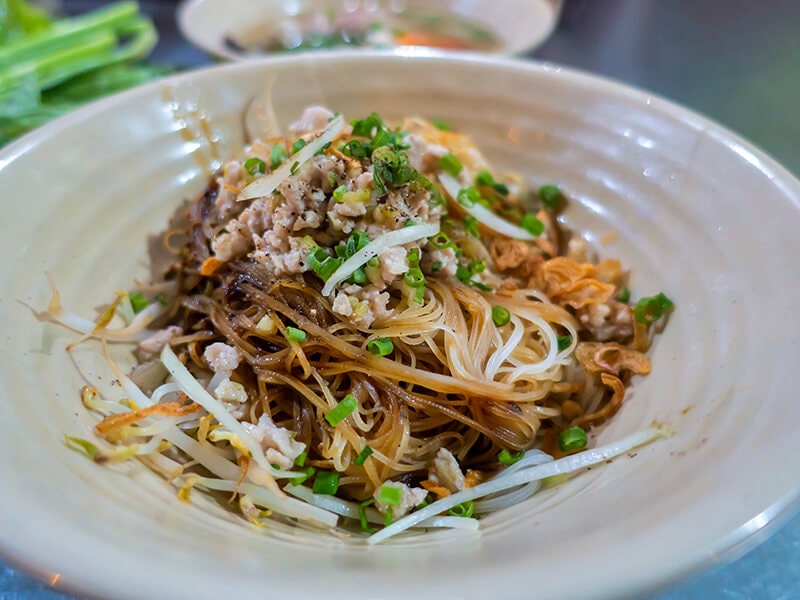
When traveling to Vietnam’s Central Highlands, make sure that dried Pho is on your to-do list. More specifically, it is mainly available in Gia Lai Province, dating back to as far as the late 1950s.
This dish is an offshoot of Hủ tiếu Nam Vang (pork and prawn clear noodle soup), a popular dish in the South. The noodles for this noodle soup have the same ingredients and consistency as Pho noodles, hence the name.
Dried Pho is also known as “two-bowl Pho” because customers are served two bowls. One contains noodles, shredded chicken (or chicken innards), fatty broth, and chopped pork. The other has the broth in it, possibly plus some beef meatballs and medium-rare beef.
As you can see, dried Pho is very filling and energy-packed. The combined savoriness of all the meaty ingredients is to die for. But this dish can’t be complete without some hoisin sauce (a highly important condiment) and fragrant herbs to balance the taste.
7. Vegan Pho (Phở Chay)
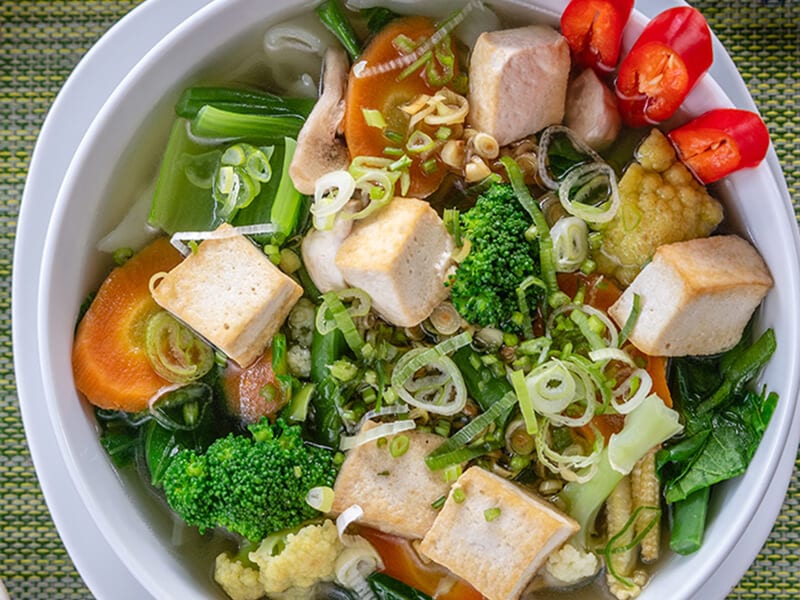
Anyone who doesn’t want to consume animal-derived ingredients can cook vegan Pho from their favorite veggies. There is no fixed recipe for the broth; as long as you’ve got the usual Pho spice mix, don’t hesitate to get creative.
In Vietnam, most people cook with carrots, onions, white radishes, and jicama. Chayote and fresh corn are additional ingredients to make the broth more savory. To substitute for the meat, sauteed straw mushrooms, tofu skin, and faux meat will work wonders.
Looking at the ingredient list, you can see how healthy and cholesterol-free vegan Pho is. This version also takes less time to cook at home: only 1 – 2 hours for the broth. If you follow a vegetarian diet, you can add a few drops of Vietnamese fish sauce to improve the flavor profile.
8. Pho With Lang Son Roast Duck (Phở Vịt Quay Lạng Sơn)
This is a must-try delicacy in Lang Son, a province in Vietnam’s mountainous northern region. With luck, you can look for it in select restaurants in big cities. However, finding it outside Vietnam is a daunting task.
The star of this dish is the acclaimed roast duck from Lang Son. Every restaurant and vendor has their own recipe for making it, but you can be sure that your taste buds will be very happy with the juicy, spice-packed duck meat topped with crispy, honey-colored skin.
Although the broth for roast duck Pho is made from pork bones and spices like other versions, the one ingredient making it stand out is the juices from roast duck. As a result, the broth boasts distinct flavors plus some fatty goodness you can’t find in other dishes.
Follow this helpful tutorial if you are confident your cooking skills can take on roast duck Pho.
9. Sate Pho (Phở Sa Tế)
This interesting version of Pho is only available in the Southern region, mostly in the vicinity of Ho Chi Minh City. It is a creation by local Hoa people (Vietnamese people of Chinese descent).
The most well-known restaurant offering this dish, which is located on Cao Van Lau Street (District 6), began doing so more than 40 years ago, so it is safe to assume that sate Pho debuted in the 1960s – 1970s.
By and large, sate Pho employs the same method of cooking as traditional beef Pho. But what makes it different is the addition of sate seasoning and peanut sauce to the broth. That results in a slightly spicy and deeply fatty bowl of Pho you won’t forget anytime soon.
10. Tapioca Pho (Phở Sắn)
Though innovative cooks in Quang Nam Province made tapioca Pho in the 1960s, the dish only gained widespread fame 40 years later. Unlike normal rice Pho noodles, tapioca Pho noodles have a round, net-like shape.
They are very convenient to keep because they come in dried forms. To cook them, you only need to soak them in cold water for a few minutes, then add the broth plus toppings and enjoy.
But tapioca Pho doesn’t go with ordinary Pho ingredients. Instead, locals savor it with grilled snakeheads(or eels), banana blossoms, and sweet-and-sour dipping sauce. Its price is also lower than other Pho variations, making this dish a filling yet affordable meal.
11. Pho With Grilled Liver (Phở Gan Cháy)
Nobody knows for sure when the people of Bac Ninh Province first came up with this extremely nutritious noodle soup, but it has been a staple in the northern province for as long as locals can remember.
Rather than beef or chicken, this Pho version goes with fresh pork liver that is carefully marinated and pan-fried to perfection. The juice is also added to the beef broth, imparting a strong and unforgettably fatty flavor to Pho.
Unlike the classic Northern beef Pho, Pho with grilled liver requires a lot of bean sprouts on the side. Some fragrant herbs and a few drops of vinegar or chili sauce are the necessary ingredients to complete it. Some vendors may add more types of pork offal to increase the flavor.
Non-Noodle Soup Dishes
As mentioned above, many Vietnamese people attribute the name “Pho” to non-noodle soup dishes made with Pho rice noodles. In this section, you can find new ways to cook Pho, from stir-fried delights to deep-fried temptations.
12. Stir-Fried Pho (Phở Xào)
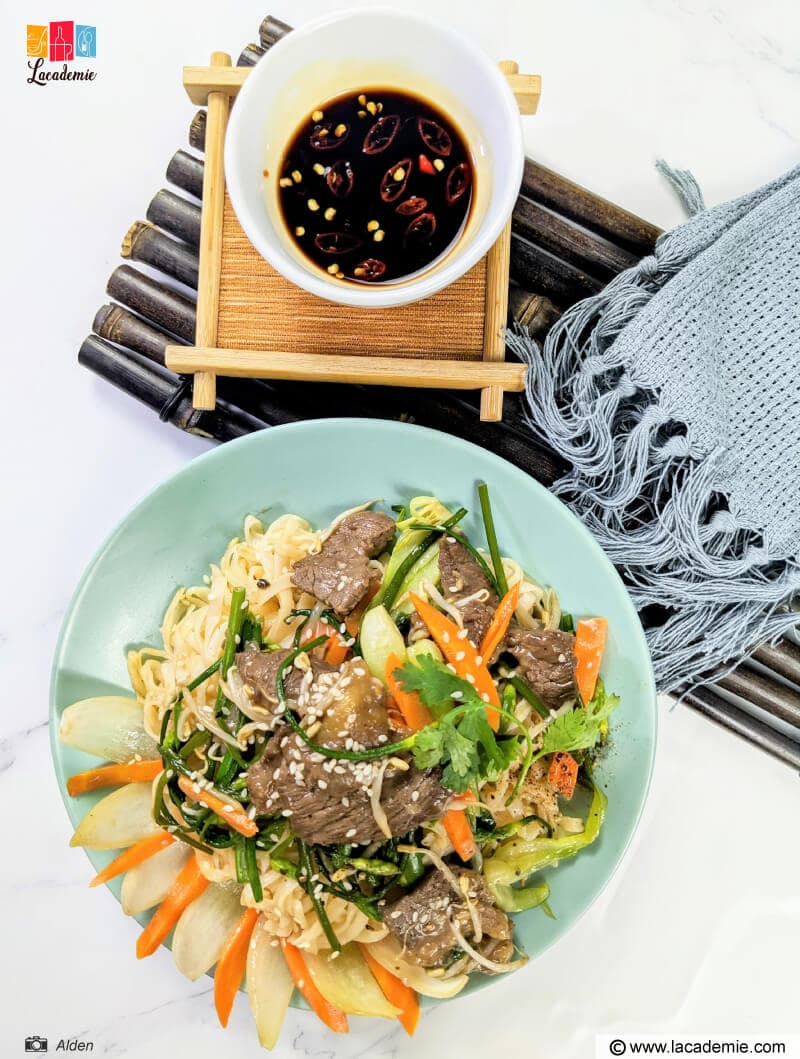
The 1970s witnessed the creation of this tempting Vietnamese dish. If you want to try a Vietnamese-style family meal, making this one is a great idea. Hanoi is the best place to find this stir-fry.
Making stir-fried Pho starts with cutting beef (preferably flank steak or tenderloin) into thin slices, then marinating the meat carefully before sauteing it with various veggies. When the beef is nearly done, add Pho rice noodles, give everything a quick stir, and your delicious meal is ready.
13. Seafood Pho (Phở Hải Sản)
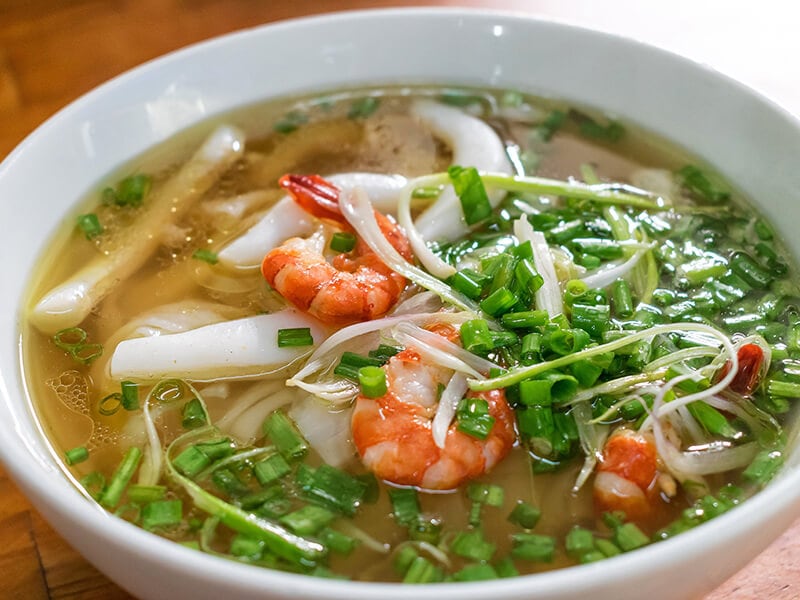
Vietnamese people living in coastal provinces occasionally stir-fry Pho rice noodles with seafood. Fresh shrimp, squids, shellfish, and fish (like carp) are the primary sources of protein for this easy recipe.
Meanwhile, the noodle soup version of seafood Pho is so rare and unpopular in Vietnam that it almost sounds like an international invention. Still, making it may be worth a try when you want to lighten the load of leftover food on your fridge.
14. Pho Rolls (Phở Cuốn)
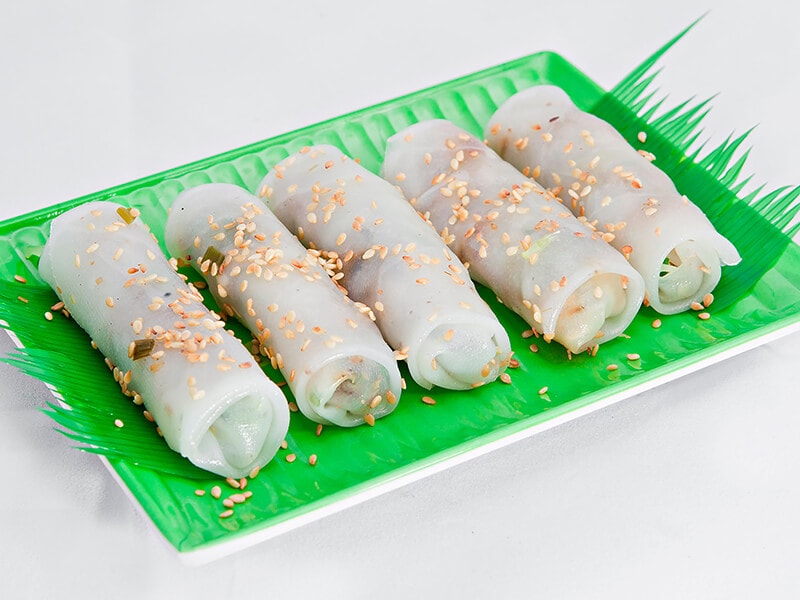
Many great dishes come about as an accident, and Pho rolls are such a fine example. In the early 2000s, a Pho vendor in downtown Hanoi was serving her customer when she found out that the broth had run out, so she had to make an improvised dish.
Her answer was to cook and work the Pho rice noodles into thin sheets, then she cut them into square pieces and used them to make rolls with cooked beef and fragrant herbs, plus dipping sauce on the side.
The new item was a success. Anyone still skeptical about this phenomenon soon fell in love with it. Eventually, people realized medium-rare beef was a more suitable match for the rolls, so it became the default ingredient to this date.
While this innovative take on Pho is a well-known treat in Southern Vietnam as well as around the world, Hanoi is still the best city to find palatable Pho rolls. Have a bite, and you will find that beneath the soft snow-white wrap is a stunning display of color.
Orange pumpkin pieces, green lettuce, or purple beetroots are a few spots on that delicious palette. Like other Vietnamese-style rolls, the flavorful fish sauce-based sauce contributes significantly to the overall experience.
15. Deep-Fried Pho (Phở Chiên Phồng)
Is it even possible to deep-fry Pho rice noodles? The answer is yes, and the result is spectacular. While this is a popular snack and treat in Hanoi and big cities in the North, many people in other regions of Vietnam have never heard of it.
Suppose that you live in Hanoi and want to surprise your Vietnamese friends from the Southern or Central regions, treat them to deep-fried Pho! They will be amazed by how street vendors carefully cut the noodles into square pieces and deep-fry them until fluffy.
Many people believe that deep-fried Pho was created in the 1990s. Only the flat and wide Northern Pho noodles are suitable for making this dish, hence its origin.
The crispy, crackling-like Pho pillows will then accompany sauteed beef and veggies. Add a small bowl of dipping sauce balanced with lime juice, and you’re good to go.
Find out how Pho rolls and deep-fried Pho are an acclaimed duo of Hanoi street food.
16. Mixed Pho (Phở Trộn)
The list of delicious Pho dishes from Hanoi continues with mixed Pho. Looking like chicken Pho minus the broth, it made its first appearance in the late 1990s. If you visit Vietnam’s capital city and want a light breakfast, try this noodle salad-like treat.
A dish of mixed Pho simply consists of white-and-golden steamed chicken, Pho noodles, fried shallots, roasted peanuts, and a sweet-and-sour sauce. Though it isn’t necessary, a side of coleslaw will elevate the enjoyment even further.
As one of the most alluring Vietnamese street food in Hanoi, mixed Pho only agrees with excellently-textured free-range chicken. You will feel a sea of savory goodness in every bite.
17. Sour Pho (Phở Chua)
Sour Pho is another great delight from Lang Son, but neighboring provinces like Cao Bang and Ha Giang also sell crave-worthy sour Pho. It is more like a noodle salad than a soup dish.
No one knows for sure where this version of Pho came from: some say it is a local interpretation of Hanoi-style Pho, while others speculate that it originated in China.
Unlike other ordinary Pho with salty or sweet broth, sour Pho features a sweet and sour sauce mixed with many exotic spices and some sources of starch, like taro and sweet potatoes. Besides, it is best served warm or even cold, not hot.
The noodles for sour Pho are thick and sturdier than normal Pho noodles. As for the main ingredients, sour Pho is a symphony of rich flavors from char siu (Chinese-style BBQ meat), fried pork livers, pork rinds, or the nationally famous Lang Son roast duck.
Nowadays, many dining venues, especially those outside of Lang Son, substitute the porky ingredients with shredded chicken breasts, chicken innards, and prawn crackers.
18. Pho Burger
Pho is generally considered a great Vietnamese fast food. Understandably, many have tried to marry it with burgers, the icon of Western fast food. But none is as persistent as McDonald’s, which introduced Pho burgers to its Vietnamese locations in 2020 and again in 2022.
This type of burger is only available in Vietnam, so you can’t purchase it at home. The good news is that you won’t be missing much because the majority of Vietnamese people aren’t thrilled about this innovation in their traditional food.
The idea sparked skepticism when it was announced, followed by eager expectations at its launch. However, when the novelty value wore off, most Vietnamese foodies simply forgot about it. One reason is that Pho burgers were, and still are, more expensive than actual Pho.
Also, perhaps they weren’t happy about the concept of two buns sandwiched with Australian beef patties, an egg patty, herbs, and instant Pho sauce. That is so different from traditional Pho. But this type of burger is still on sale, so you can order one and make your own judgment.
What Are The Best Places To Eat Pho?
To help you access this iconic Vietnamese dish more easily, I’ve included a list of the best eateries in Vietnam and America. Visit them when you wish for a delicious serving of Pho.
1. Phở Gia Truyền
Located in downtown Hanoi, this famous restaurant is a favorite place for anyone into authentic Northern beef Pho. While it is small, Pho Gia Truyen has more than 100 years of reputation to justify the long lines of customers waiting for it.
Address: 49 Bat Dan, Cua Dong, Hoan Kiem, Hanoi, Vietnam
Phone: Not available.
2. Phở Thìn Lò Đúc
Established in 1979, Pho Thin has been serving up delicious Beef pho for many generations. Its signature Pho with sauteed beef (phở tái lăn) is to die for. The broth is fairly rich and a little non-traditional, but I’m sure you will love it.
Address: 13 Lo Duc, Hai Ba Trung, Hanoi, Vietnam
Phone: +84977064223
3. Phở Hoà Pasteur
Northern Pho is refined and elegant, but do you want to try the rich flavor of the Southern version? If so, head to Ho Chi Minh City and Phở Hoà Pasteur, which is popular among locals and tourists alike.
Address: 260C Pasteur, Ward 8, District 3, Ho Chi Minh City, Vietnam
Phone: +842838297943
4. Pho 95
You may come across a few restaurants bearing the name “Pho 95” in America, but the best brand in my opinion is the one in Colorado. It has two branches offering authentic beef Pho with flavorful meats and true Vietnamese herbs.
Website: https://pho95noodlehouse.com/
Location 1:
Address: 1401 S Federal Blvd, Denver, CO 80219
Phone: +13039363322
Location 2:
Address: 6879 S Vine St #714, Centennial, CO 80122
Phone: +13037979535
5. Pho Hoa Noodle Soup
Pho Hoa Noodle Soup is a chain of Vietnamese restaurants with many locations throughout America. Beef Pho is its signature dish, but you will find the seafood, chicken, meatball, and vegetarian versions to be equally delicious.
Website: https://phohoa.com
Vietnamese Pho: A Pho-Nomenal Noodle Dish
Vietnamese Pho is an amazingly tasty dish that you will love in every version. There are more than a dozen of them to try, some of which are only available in Vietnam. Next time you visit Vietnam, remember these names when you want to experience the Vietnamese food scene.
Of course, you can try this dish at your local Vietnamese restaurants or even cook Pho at home. If you have any questions about Pho in general or want to share your experience with this food, feel free to do so in the comment section. And please share this post with your friend!

